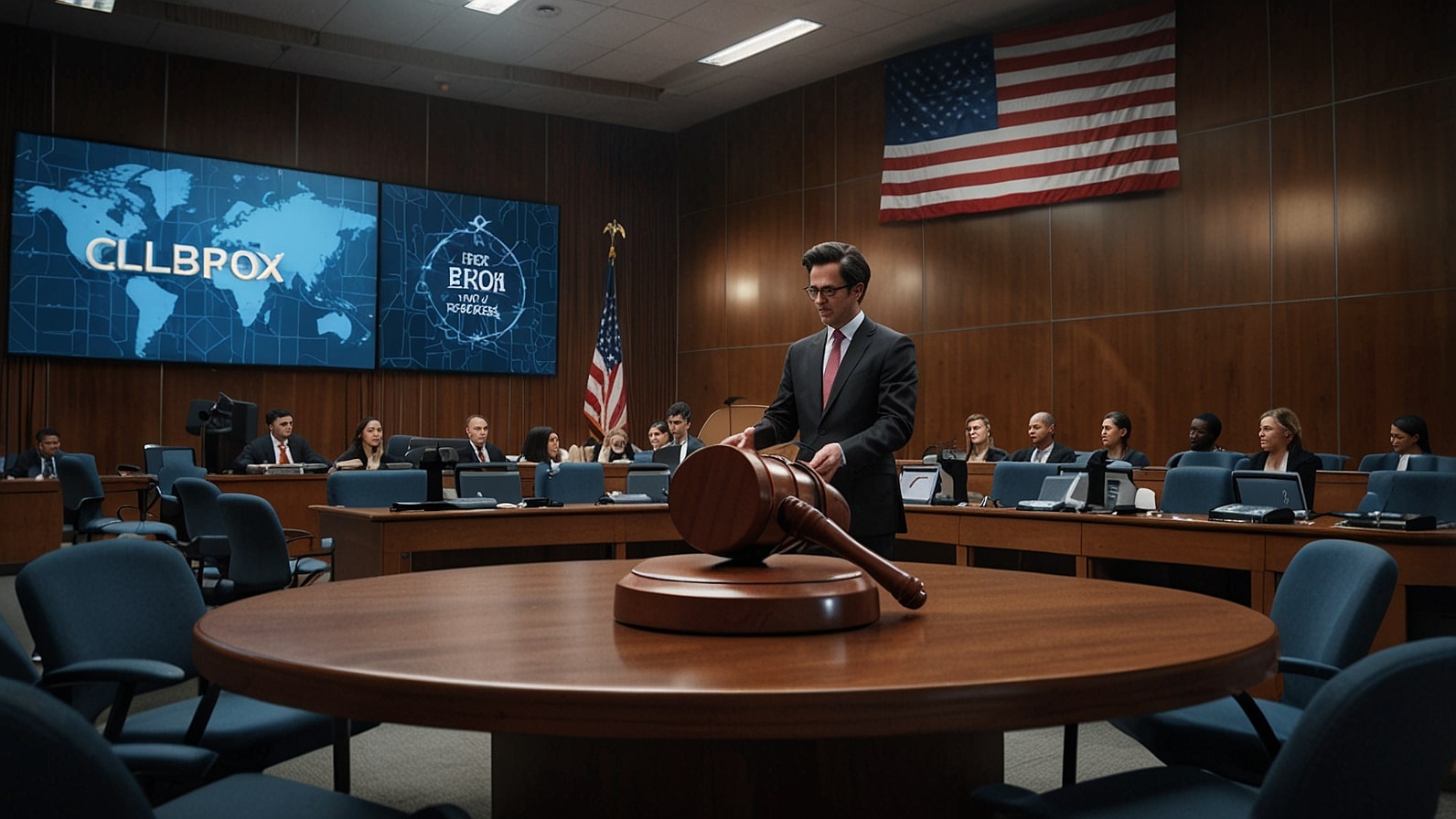And in a significant twist that rattled the corporate world, Clorox, the American multinational producer of consumer and professional products, recently sued Cognizant, one of the world’s leading IT-based service providers, for $380 million due to a disastrous cyberattack that may have occurred in 2023.
The case has become one of the most popular business stories in the present day, which strongly indicates the rising threats posed by cybersecurity attacks, as well as the widespread consequences that they pose to business relationships. The complaint, which is pending in an American court, alleges that Cognizant was criminally negligent in protecting the Clorox systems, raising the issue of responsibility in outsourcing IT services and highlighting how the threat of cyberattacks is making many businesses worldwide vulnerable.
The Cyberattack that Ignited Controversy
Later in August 2023, Clorox revealed that one of its key cybersecurity incidents had occurred, severely disrupting the company and causing significant financial losses and disruptions to its supply chain.
This was achieved by a well-organized ransom gang disrupting production and product deliveries across its entire product lineup, including household name-brand products such as Clorox bleach, Pine-Sol, and Glad. The leakage resulted in the reimbursement of an expected outlay of 49 million in direct losses, leading to a broader impact on revenues and the market’s image.
As court documents reveal, Clorox accuses Cognizant of failing to take proper cybersecurity precautions since it was hired to administer and protect its IT infrastructure. The complaint includes an account of how flaws in systems offered by Cognizant left the Clorox network vulnerable to exploitation by hackers, which could have been averted through adequate management of such flaws.
According to Clorox, the laxity of Cognizant in ensuring the utilization of effective security protocols significantly contributed to the extent of the breach that the company was forced to pay millions of dollars in repairing the system and lost customers.
Cognizant’s Answer: An Absolute Denial
Cognizant has excluded the assertions with great fervor and labeled the allegations brought out by Clorox as incendiary and false. On a publicly released statement, the IT company defended that it employed the same security measures used in the industry and the breach was caused by other parties.
Cognizant pointed out that cyber threats are a dynamic threat that is essentially out of the control of most vendors, and the cause of the incident may depend on Clorox’s internal practices. The company threatened to fight to the last breath in court, and the subsequent battle of the giants is likely to unfold in the legal field, dramatically changing relations between vendors and clients in the IT outsourcing market.
This conflict arises as Cognizant continues to address its challenges, including intense competition in the IT services industry and the pressure to innovate in the fields of artificial intelligence and cloud computing. The court case may also significantly damage Cognizant’s reputation, particularly if the evidence presented substantiates Clorox’s claims of negligence.
Broader Implications on the Industry
The case against Clorox-Cognizant highlights the importance of cybersecurity in corporate governance. With companies using more and more third-party vendors to provide IT infrastructure, the question of liability in case of a breach has become a matter of concern.
According to analysts, this case may set a precedent for how firms distribute liability in outsourcing agreements, and the consequences may require more stringent terms in cybersecurity and corresponding enhancements in compliance expenditures by IT vendors.
The fact that the hearing of such a lawsuit is occurring at a time when there has been an increase in cyber threats against global businesses is notable. The 2025 report by Cybersecurity Ventures shows that cybercrime costs the world economy 10.5 trillion per year, as compared to 6 trillion in 2021.
The occurrence of a high-profile hack, such as the one experienced by Clorox, highlights the risk that even large organizations face and underscores the need for boards to invest in cybersecurity and implement practical risk management approaches.
Market Reactions and Financial Fallout
The news of the lawsuit shook the financial world. The stock of Clorox (NYSE: CLX) declined by 2.3 percent at the opening on July 26, 2025, as investors considered several claims regarding potential litigation expenses and a tarnished image.
At the same time, the shares of Cognizant (NASDAQ: CTSH) declined 3.1% as the company faced legal and financial risks. Both firms are in the spotlight as investors assess how the feud will impact them in the long term, particularly in terms of their operations and market strategies.
In the case of Clorox, the lawsuit is an extension of the company’s efforts to overcome the repercussions of the 2023 cyberattack. They have since then invested massively in reconstituting their IT infrastructure and improving their cybersecurity systems, but the economic indicators are there to see.
Clorox, in its most recent earnings report, stated that it experienced a 28% increase in operating revenue year-over-year, driven by AI-driven efficiencies and growth in its financial services segment. Nonetheless, the expenses incurred in the cyberattack still burden profitability, and therefore, the monetary recovery depends on the outcome of such litigation.
However, Cognizant is at risk of losing its clientele. Cognizant as one of the biggest IT service providers in the world with the market capitalization of over $40billion cannot do without trust to ensure its sustenance of contracts with the big corporations. Losing this would result in more people scrutinizing its cybersecurity protocols and might prompt its clients to consider other firms, such as Accenture or Infosys.
What’s Next for Clorox and Cognizant?
The legal case is in full swing, and both companies are engaged in the fight, which may take months and even years to complete. Clorox is demanding $380 million in losses, which include direct losses, remediation expenses, and lost business opportunities. According to legal experts, the case may be discussed in terms of the details of service-level agreements (SLAs) between Clorox and Cognizant, specifically those concerning the obligation to maintain cybersecurity.
If Clorox can demonstrate that Cognizant did not perform to contract standards, it may be entitled to a substantial settlement. Nevertheless, the defense team at Cognizant may attempt to shelter its liability by arguing that the act was an extreme act of war in cyberspace and could not have been predicted.
The case also raises questions about the nature of cybersecurity in general. As ransomware attacks continue to become more sophisticated, businesses across various industries are reviewing their relationships with third-party vendors.
It is possible that the use of in-house security teams or some hybrid approach would be faster due to the Clorox-Cognizant conflict than before, where firms can have more control over the development of the systems where they and their critical infrastructure are hosted and protected.
What This Means to Investors and Companies
The suit serves as an eye-opener for investors about the unseen dangers lurking in the corporate supply chain. The results of a cybersecurity breakdown may also be chain reactions, and in such cases, any affected company, its partners, suppliers, and customers may be affected.
The Clorox-Cognizant case exemplifies why it is essential to maintain high standards of due diligence when selecting IT vendors and why the disclosure of risks should be made transparent in financial reporting.
To businesses, the controversy will serve as a wake-up call because they should pay more attention to the cybersecurity aspect of their business strategy. The example of brain attacks demonstrates that digital transformation is intensifying.
When companies choose to be innovative, they should strike the right balance between innovation and security, ensuring their systems can resist new threats. This trial may have an impact on the way companies draft outsourcing deals, with a greater focus on the process of shared responsibility and active risk management.
Conclusion
The Clorox-Cognizant lawsuit is going to mark one of the critical junctures of the business-technological-cybersecurity nexus. With Clorox aiming at getting Cognizant to pay damages due to a cyber-attack, which resulted in a hefty cost, the matter highlights the weak point of IT outsourcing and the risk involved in having sound cyber protections in place.
As the two firms prepare to go to court and engage in a bitter legal battle, eyes in the business world are fixed, awaiting the outcome, as it is clear that the very future of industry norms, as well as corporate relations, may be reconfigured in the years to come.









